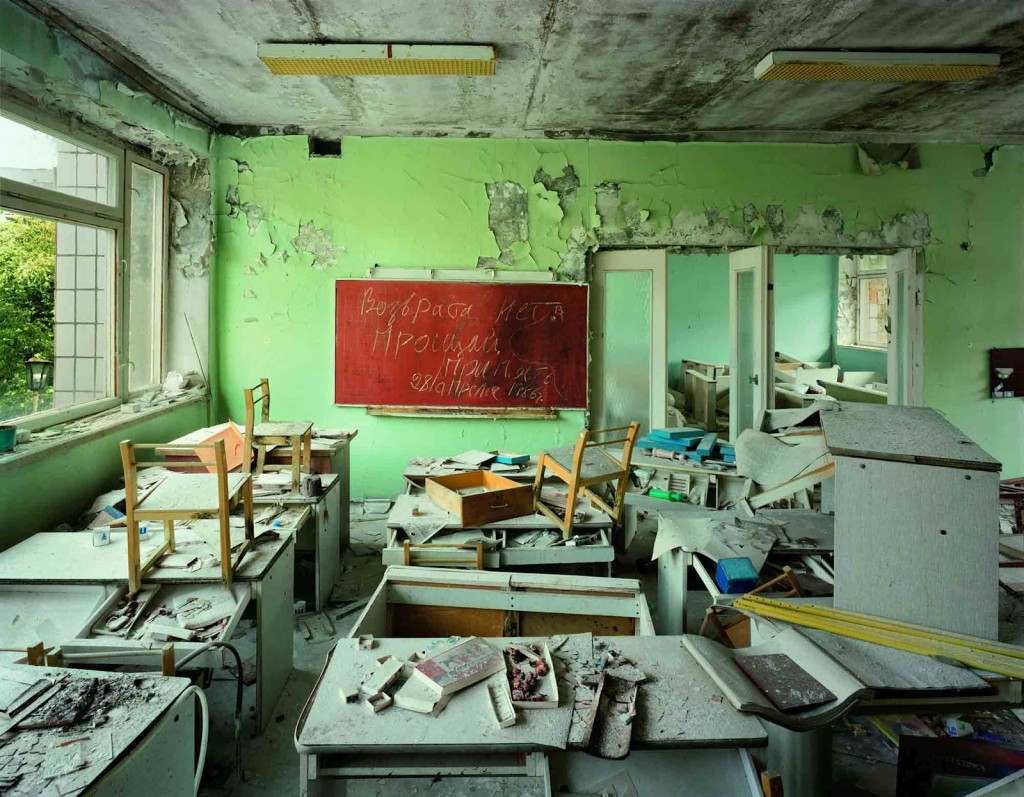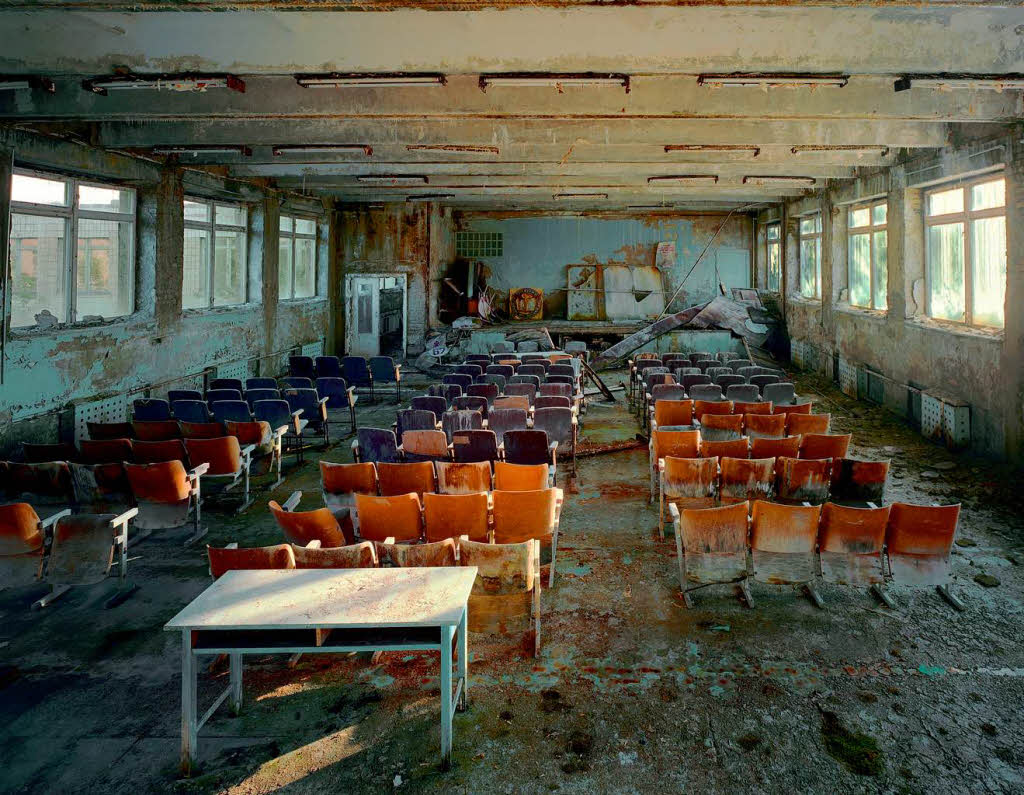Robert Polidori
Robert Polidori is an American photographer born in Montreal, Canada, who lives between Paris and New York. He’s been a staff photographer for the New Yorker for more than a decade, and has won a heckload of awards including a couple of Eisenstadts & a World Press Award. He’s also a big force in fine art photography. His work centres around themes of the constructed world like Place Versailles between art installations or major construction projects in China, but also, slums, war zones, ruins, and disasters in places like Havana, post-Katrina New Orleans, Beirut, Pripyat & Chernobyl. Pretty heady stuff to say the least.

In particular I really enjoy his 2003 series from Pripyat and Chernobyl. Since the nuclear disaster of 1986, there have been many photographers who have heeded the urge to visit and document this city in ruins. Most take a fairly stolid memento mori approach, which Polidori also addresses, but there is an additional richness to his photos that mere documentary photographers miss. Polidori’s photos are stage sets for an apocalypse – but more than that, they are impeccably composed, perfectly lit eye-candy. The juxtaposition of the lush beauty of Polidori’s photographic technique with these scenes of devastation lends dramatic weightiness to the simple facts; you can’t just look at these images casually, you have to gape in awe. Worth noting, these photos were displayed in a gallery setting as quite large prints, most around 3×4′. I had the good fortune to see them as part of an exhibition at Montreal’s Musée d’Art Contemporain a couple of years back and I was blown away.

To a fairly large extent his work is perceived as morbid, but I don’t buy into that point of view. I like to go into abandoned buildings and look around, especially old factories and commercial buildings, often taking photos. What I find most inspiring about these places is not so much the decay, but the traces of life. Every time I am in an abandoned space, I like to imagine what it was like when occupied; the people moving and talking, the sounds and colours of a busy workspace or public space. There’s a kind of weightiness to realizing how people used these spaces day after day, year after year – and now they are no longer “for” anything, they simply “are”. I get it. I’m no Robert Polidori, but I took these photos on a visit to Cuba, for example. Of course my own attitudes and experience colour my interpretation of Polidoris’ work but that’s also why it resonates with me so strongly.

Polidori’s Chernobyl series can be purchased in book form via Amazon (Zones of Exclusion: Pripyat and Chernobyl). More of his photography can be seen via Edwin Houk Gallery.




[…] couple of days ago I wrote about the photographer Robert Polidori, and mentioned that to some extent his work resonates with me because I also take photos of […]
[…] three and realised that I already saw Robert Polidori’s photographs when I saw his work on Chernobyl a few years ago. On the other hand, Edward Burtynsky is apparently known for his landscapes […]
[…] http://greynotgrey.com/blog/2012/08/30/robert-polidori/ […]
[…] 2018. Robert Polidori. [ONLINE] Available at: http://greynotgrey.com/blog/2012/08/30/robert-polidori/. [Accessed 13 June […]